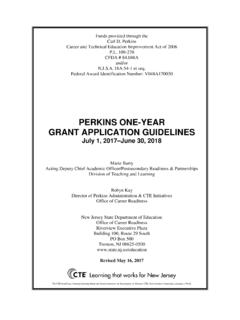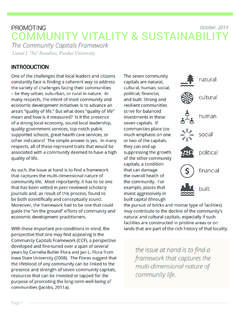Transcription of Transforming Leadership with Whole Brain Thinking
1 Better results through better thinkingTransforming Leadership with Whole Brain Thinkingbetter results through better thinking2 with 10,000 employees, this 1,100-bed hospital system is one of the largest not-for-profi t teach-ing health systems in the country. While already ranked among the elite of America s hospitals, landing on such lists as News and World Report s America s Best Hospitals and Thomson Reuters 100 Top Hospitals, the institution recently embarked on a journey of transformational change to reach new levels of clinical and work-place excellence. This commitment to transformation, as opposed to gradual, small changes, has been deliberate and signifi cant. with the healthcare industry in a constant and rapid state of change and mounting pressures impacting health systems around the country, the institution knew it could not continu-ally reach new goals by taking slow, incremental steps.
2 It realized that breakthrough results in a challenging environment require radical Thinking and dramatic change. To get there, it would have to harness the best Thinking , the most productive collaborations and the active engagement of every employee. And it would have to start with the people on the front line of the transformation: its leaders. The leader s behavior inspires the team s commit-ment to excellence and innovative Thinking and encourages personal growth for the individual team members, says the VP of Pathology and Laboratory Services. Leaders would have to pave the way for trans-formation through their own motivation and behavior, as well as by drawing on heightened interpersonal skills to be able to listen eff ectively, promote collaboration, develop high-performance teams and inspire big, bold change. The institu-tion understood that patients and employees would both directly benefi t from this approach.
3 From this perspective, the institution s System Learning Department (SLD) worked to determine the competencies, tools and programs that would facilitate transformation at the Leadership level and, ultimately, throughout the the GapsThrough assessments of the existing Leadership development program off erings and review of patient satisfaction surveys, the SLD was able to identify several interrelated gaps in the formalized development and growth of its satisfaction surveys revealed that commu-nication was a key opportunity area leaders could improve upon with the right knowledge and skills. Eff ective communication is vital not just in direct interactions with patients, but in ensuring team members interact with each other in the most productive way to reach better decisions and better outcomes. In the high-stress environment of a large health system, successful communica-tion can lead to more effi cient, focused teams and minimize the distractions and misunderstandings that can potentially impact the quality of care , the current development off erings required attention in order to equip leaders with the necessary background and competencies they would need to address this critical issue.
4 Research has shown that individuals can enhance their communication, productivity, problem-solving, creativity and other interpersonal development by understanding their own and others think-ing This knowledge, grounded in self-awareness, can help people become more eff ective leaders, educators and team members. Yet very few personal development and self-awareness programs were being off ered to leaders on an ongoing , while a personal assessment instru-ment was available to anyone who requested it, participation was low, and feedback suggested that many struggled with understanding, retain-ing and applying its concepts. Furthermore, there was no instrument available as part of the new leader orientation process to help new leaders 1 Ned Herrmann, Theory Behind The HBDI and Whole Brain Technology, 1998, adapt to the Thinking preferences of oth-ers.
5 He found that presenting information in a way that recognizes, respects and is compatible with diff erent preferences is critical to eff ectively communicating with and meeting the needs and expectations of those one interacts with in the work environment. The model s basis both in solid research and in practical use indicated it could appeal to the institution s leaders on a scientifi c as well as an application evaluate the approach, a pilot Whole Brain Thinking program was conducted with the Senior Management Team and System Leadership Committee. with the busy schedules of everyone in a hospital environment, there was some initial resistance to spending time on the program, but the pilot quickly alleviated concerns. Seeing the HBDI data and experiencing the pilot session immediately demonstrated the value of the Whole Brain model and how better Thinking could be leveraged to increase Leadership eff this pilot, 350 leaders completed the HBDI and learned about their Thinking preferenc-es and the application of Whole Brain Thinking at their Leadership Planning Meeting in December of 2007.
6 A post-meeting survey of participants re-vealed that a large majority of the leaders strongly recommended sharing the program with all lead-ers throughout the system to enhance not just communication but interpersonal understanding, creativity and team eff how to integrate their own personal Thinking styles with those of their new team fi ndings indicated a need for:A validated, research-backed assessment instrument that would provide the baseline of knowledge about an individual s Thinking preferencesA model and approach that would be easy to understand, remember and applyA method and common language to help lead- ers integrate their Thinking styles with team members for more eff ective communicationAn approach that demonstrated how Thinking styles impact communication, productivity and teamwork, and as a result, patient satisfaction A Brain -Based SolutionThe Department identifi ed Herrmann International s Whole Brain Technology, which includes the Herrmann Brain Dominance Instrument (HBDI ), as a possible solution to ad-dress these needs.
7 The HBDI is the instrument at the core of Herrmann International s Whole Brain model, which is based on decades of research on the Brain and Thinking . Of particular interest to the institution, the HBDI is a strongly validated assessment tool; it has been researched and studied for over 28 years, and all of the validation studies have been positive, considered by experts to be a rarity in this fi eld. The Whole Brain model, which was developed by Ned Herrmann, a physicist who headed Management Education at General Electric before founding Herrmann International, goes beyond left- Brain /right- Brain studies to reveal four dis-tinct Thinking preferences: analytical, organized, strategic and interpersonal. Herrmann s research showed that everyone is capable of fl exing to less preferred Thinking styles and learning the necessary skills to diagnose The Whole Brain Modelbetter results through better thinking4 As leaders, it is our responsibility to create an atmosphere that encourages colleagues to participate in our transformation by listening to and learning from all members of the patient care team, the Associate CMO and Executive Director of one of the institution s campuses a result, in 2008 the institution introduced a Transforming Leadership strategy with a founda-tion in Whole Brain Thinking , designed to give current and future leaders the skills to drive and inspire learning and transformation.
8 Whole Brain Thinking principles would serve as the framework to continue the Leadership education process on self-awareness, communication, engagement, patient satisfaction and creativity. Whole Brain Thinking as a Framework for TransformationUnder the umbrella of its overarching Talent Management strategy, The SLD moved forward with implementing the HBDI / Whole Brain model solution throughout the ranks of the organiza-tion s leaders, using Herrmann International s four-stage model of transformation as a planning keeping with its philosophy of pursuing dramatic change and breakthrough results, the institution applied an accelerated example of the transformation model:Stage 1 Foundation: Between February and April of 2008, the HBDI assessment and one-hour overview was delivered to 601 managers and supervisors, comprising all leaders who had not participated in the December Leadership Meeting.
9 Stage 2 Application: SLD team members consulted with department leaders to create customized programs aimed at meeting the individual learning needs of each participating department. From these discussions, the team developed educational sessions drawing on FOUNDATIONAPPLICATIONADOPTIONTRANSFORMAT IONI ndividuals com-plete the Herrmann Brain Dominance Instrument (HBDI ), which assesses Thinking preferences. Specific group objec-tives are addressed ( , communication, team building) through tailored workshops and consulting with the goal of helping people learn to think with their Whole brains, not just with the parts with which they feel most , depart-ments and disciplines participate in forums and activities utilizing Whole Brain Thinking to solve a specific problem or improve a leaders build a culture in which Whole Brain Thinking principles are embedded across an entire organization.
10 MEASURABLE SUCCESSTIMEH errmann International 4-Stage Model of Transformation5 Whole Brain Thinking concepts to enhance team engagement, communication, eff ectiveness and creativity throughout the institution. In total, 40 customized Whole Brain Thinking team sessions, including physician retreats, were conducted between March and July of 2008. In these sessions participants learned how to lever-age their preferred modes of Thinking at both the individual and team the VP of System Learning notes, I would start sessions by saying I know you re going to wonder why I m talking about the Brain , but as soon as they see their HBDI data, they start to see the value. They appreciate the insights it gives them into relationships and the practical ways the Whole Brain model helps them communicate more eff ectively. She adds that the departmental workshops and retreats have been very benefi cial for managers at all levels, including physicians.






